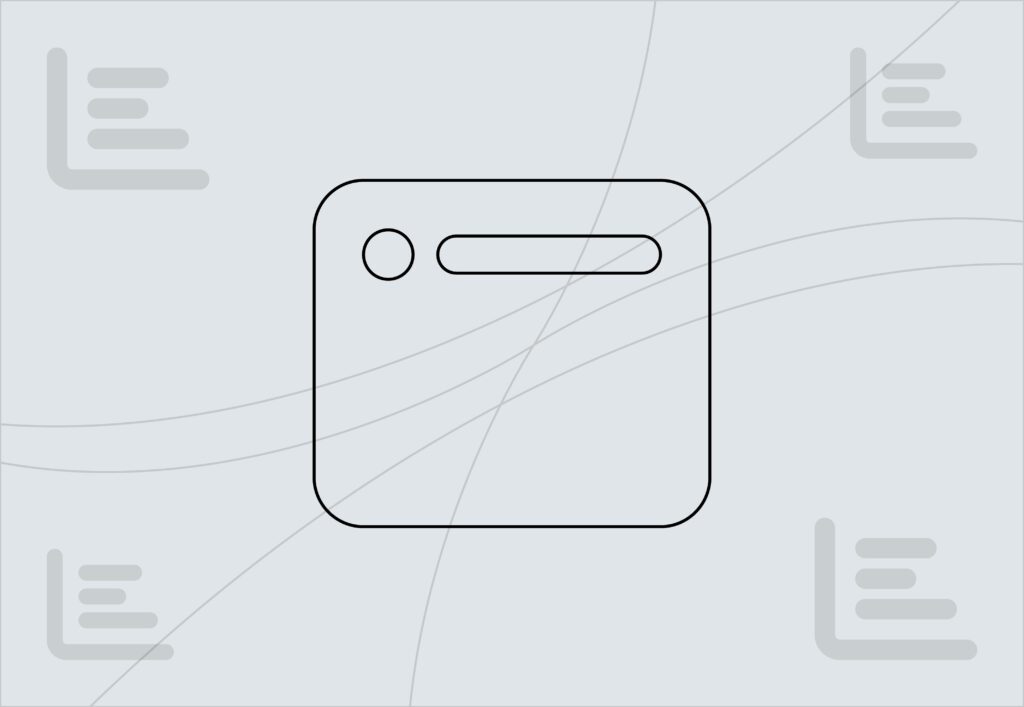
21 stats on why website accessibility is more important than ever

Accessing content and media across the internet has seen an ever-widening demographic of users over the years and it’s time to make sure that the content you’re putting out is accessible to all those users. From the 28th of June 2025, the EAA is set to change the way businesses operate in the digital world; not only will it be a best practice but it will be a legal requirement for businesses to make sure all their digital services (e.g. mobile apps, websites, booking systems) meet the new EAA accessibility standards.
What is website accessibility?
Web accessibility means designing and developing websites so that people with disabilities can perceive, understand, navigate, and interact with and contribute to. It ensures that websites are usable by everyone, including those with visual, auditory, motor, cognitive, and learning impairments.
The EAA, or the European Accessibility Act, is all about improving the accessibility of products and services for people with disabilities within the EU. The main aim is to create a more inclusive and accessible market by establishing common accessibility rules across all companies, creators and developers.
- The European Accessibility Act (EAA) directly affects all 27 countries that are part of the European Union.
The scope of the problem
The digital world has become central to everyday life, from accessing education and healthcare to managing finances and communicating with others. Yet, for millions of people with disabilities, barriers in web design, development and online services continue to restrict participation. Web accessibility is not just a technical requirement; it is a matter of human rights and equal opportunity. The European Accessibility Act (EAA), adopted in 2019, aims to address this issue by creating a common framework to ensure that key digital products and services in the European Union are accessible to all citizens, including those with disabilities.
The scale of the challenge is significant. Many rely on accessible technology to navigate daily life. However, despite existing standards such as the Web Content Accessibility Guidelines (WCAG), the vast majority of digital platforms remain out of compliance. In 2023, the WebAIM Million project reported that 96.3% of the world’s top one million websites had detectable accessibility failures, highlighting the persistence of barriers such as missing alternative text, poor contrast, and non-keyboard-friendly navigation.
The EAA seeks to tackle these systemic problems by setting harmonised accessibility requirements for digital services and products across EU member states. Beginning in June 2025, providers of e-commerce sites, banking services, e-books, and other digital tools will be legally required to meet accessibility standards. This creates not only an obligation for businesses but also an opportunity to expand their customer base. The European Commission has projected that improved accessibility could positively impact the lives of millions of citizens and generate significant economic benefits by opening up digital markets to wider audiences. For example, the European Disability Forum has noted that the purchasing power of people with disabilities and their families in Europe is worth over €1 trillion annually, a market often underestimated by businesses that overlook accessibility.
Despite these promising steps, compliance remains a concern. Many organizations, especially small and medium-sized enterprises (SMEs), lack awareness or resources to implement accessibility effectively. Moreover, accessibility is often treated as an afterthought rather than an integral part of design. This “bolt-on” approach leads to costly retrofitting and continued exclusion. Effective implementation of the EAA will therefore require not only regulation but also education, enforcement, and incentives for innovation.
The scope of the problem with web accessibility in Europe is vast but not insurmountable. The EAA provides a crucial framework to bridge the gap between technological possibility and lived experience. With over 87 million Europeans with disabilities relying on accessible services, compliance is both a legal necessity and a moral imperative. By prioritizing accessibility from the ground up, businesses and governments can foster digital inclusion, unlock economic potential, and ensure that the online world truly serves everyone.
Legal and compliance pressures
With these guidelines becoming law, it is inevitable that they’ll come with penalties if they’re not met.
- A fine of €5,000 to €20,000 per issue based on severity will be issued from the 28th June 2025
- For every unresolved violations, the company can be fined up to €1,000 per day
The business case for accessibility
Outside of the legal need to comply with the accessibility guidelines, there are a number of reasons that businesses should consider ensuring that they’re meeting the guidelines as soon as possible.
- 1 in 4 people in the UK have a disability – that’s around 16.1 million people a people a year that require websites to have accessibility requirements in mind. By not being accessible, you’ll exclude a massive potential customer base.
- In the UK, the “Purple Pound” – the spending power of disabled households – is worth £274 billion annually. Every inaccessible experience is money left on the table.
- A massive 73% of disabled users will abandon a website they find difficult to use. Poor accessibility leads to lost conversions, poor brand perception, and negative word-of-mouth.
- Web accessibility lawsuits are rising: 4,605 cases in the US alone in 2023 under the ADA. Proactively fixing accessibility is far cheaper than a lawsuit or brand damage.
- Accessible websites are better for SEO — clear structure, alt tags, keyboard navigation, and semantic HTML improve ranking. Google’s own Lighthouse tool factors accessibility into performance scores.
- 90% of users use mobile devices — and mobile UX overlaps heavily with accessibility best practices.
Accessibility is better UX for all
Accessibility isn’t just about meeting compliance requirements; it’s about creating digital experiences that work better for everyone. When websites are designed with accessibility in mind from the initial design, they naturally become clearer, more intuitive and more inclusive for all. Features like readable text, logical navigation, and thoughtful colour contrast don’t just support people with disabilities; they enhance usability for all users, regardless of context or ability. In other words, accessibility is not a limitation, it’s an opportunity to improve user experience for everyone.
- Increasing the UX development spend by 10% can lead to an 83% increase in conversions.
- Companies that use excellent design practices grow twice as fast as the industry benchmark growth rate.
- 1 in 5 users spend more than 4.5 hours per day on their mobile phones.
- 39% will stop engaging with content when loading time takes too long.
- 85% think that a company’s mobile site should be as good or better than a desktop site.
- 88% of users are less likely to return after a bad user experience.
- Mobile users are 5 times more likely to abandon a task if a site isn’t mobile-optimised.
- 83% of consumers believe that a seamless user experience across all devices is essential.
- 80% of people are willing to pay more for a better user experience

Accessibility in a post-COVID world
Even 5 years post covid, the ripple effect it caused on the digital landscape, how content is accessed and who is accessing that content is as apparent as ever. During the height of the pandemic, millions of people moved their lives online; from remote working to e-learning. The main issue was that the tools had not been designed or built with accessibility in mind and left a significant number of people excluded.
- 96.3% had detectable accessibility failures, proving that even widely used websites often remain inaccessible
This reliance on digital access only exacerbated the limitations of accessibility. In Europe alone, 87 million people, many of whom already faced disproportionate challenges in accessing pandemic-related information or attending virtual classes. Accessibility deficits in government and healthcare websites proved particularly problematic as they directly impacted public health and safety showing that it’s not only business-related implications but inaccessibility can cause actual harm.
In the post-COVID world, accessibility must be viewed as both a legal requirement and a moral responsibility. Initiatives such as the European Accessibility Act (EAA), reflect the growing need for standardisation and legislation of these practices. With the Act mandating accessibility standards for e-commerce, banking and other essential digital services, it ensures that inclusivity becomes a built-in expectation rather than a secondary after thought. Outside of compliance, businesses that actively engage and embrace these standards stand to gain from reaching a wider audience.
- Globally, the disability market represents an estimated $13 trillion in annual disposable income when including friends and family
Moving forwards, the lessons that the pandemic taught the digital world must, and will, drive a cultural shift in design and development whereby accessibility should be embedded from the start, not retrofitted after complaints or lawsuits. By investing in people and accessible design, organisations can future-proof their services, expand their user participation and uphold the principle that everyone deserves equal access to the web.
Barriers and common mistakes
There is a common misconception that companies need to strip out an excessive amount of styling and colour to make their site accessible; this is simply not the case! With careful consideration and a deeper understanding of what is required, a vast majority of websites can be brought inline with the new standards. We’ve heard a wide range of perceived barriers around ensuring a site is accessible and have listed what can be done to alleviate these barriers:
My website is too complex to make changes to
This is the most common roadblock for companies trying to meet these guidelines. There are a number of options that are available including a complete rebuild using a more user-friendly, open source core such as WordPress or investigating what currently exists which could effectively modify your current site. Our team of developers can help support you and identify the best solution for you on a case by case basis.
To talk to our team of experts, please get in contact with us here.

It takes too long
A website can take anywhere from 4 weeks to 6 months, or sometimes longer, depending on the complexity of the functionality. It’s important to consider though that, if the site was built robustly to start with, there are some quick ‘bandaid’ solutions that you can install onto the site. The one that we currently recommend to our clients in need of a quicker solution is AudioEye.
AudioEye
AudioEye is a UK-based company that specialises in accessibility solutions for a wide range of CMSs and bespoke solutions.
They offer a WordPress plugin that, once installed and configured, gives the user the ability to manipulate their experience to meet their accessibility needs. This could be anything from changing font size to adding a reading guide for users who find it helpful to have what they’re reading highlighted in a different colour.
To see a live demo of what they offer, visit their website by clicking here and navigating around their site. They also offer a 14-day free trial of their automated solution for you to trial on your own website to test.
It’s too expensive to re-develop my site
It can certainly seem overwhelming when an agency suggests a rebuild/redevelopment but there are a couple of questions to ask yourself:
- Does my website need updating to utilise new technologies to improve SEO?
- Does my website need a refresh to reflect my current branding?
- Could my website be easier to use as an administrator updating content?
If the answer to any of these is yes, it is certainly worth considering attributing some of the cost of a new site to the reasons above.
- The industry standard for websites is to have a lifetime of 5-7 years depending on the quality of the build, the changing needs of the business and other factors.
Conclusion
Ultimately, ensuring that everyone has access to freedom of information on the internet regardless of challenges and barriers they may face is every company’s responsibility.
Brands that choose Embryo know they are partnering with the best and will achieve the extraordinary, and that goes for ensuring that the websites we deliver meet accessibility standards on all sites we build.



